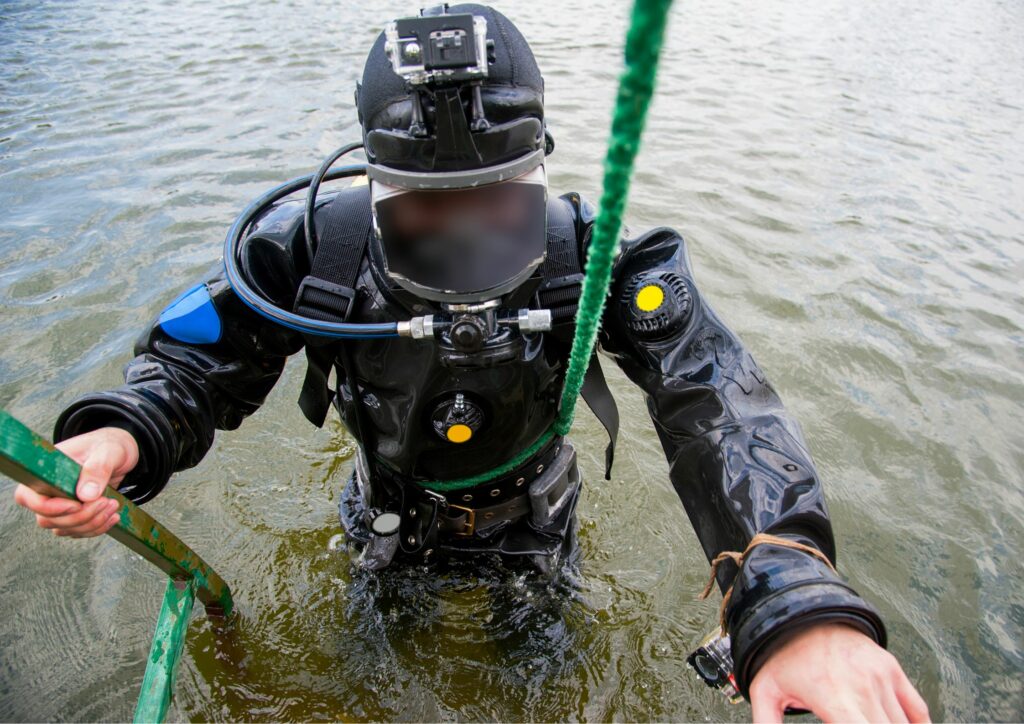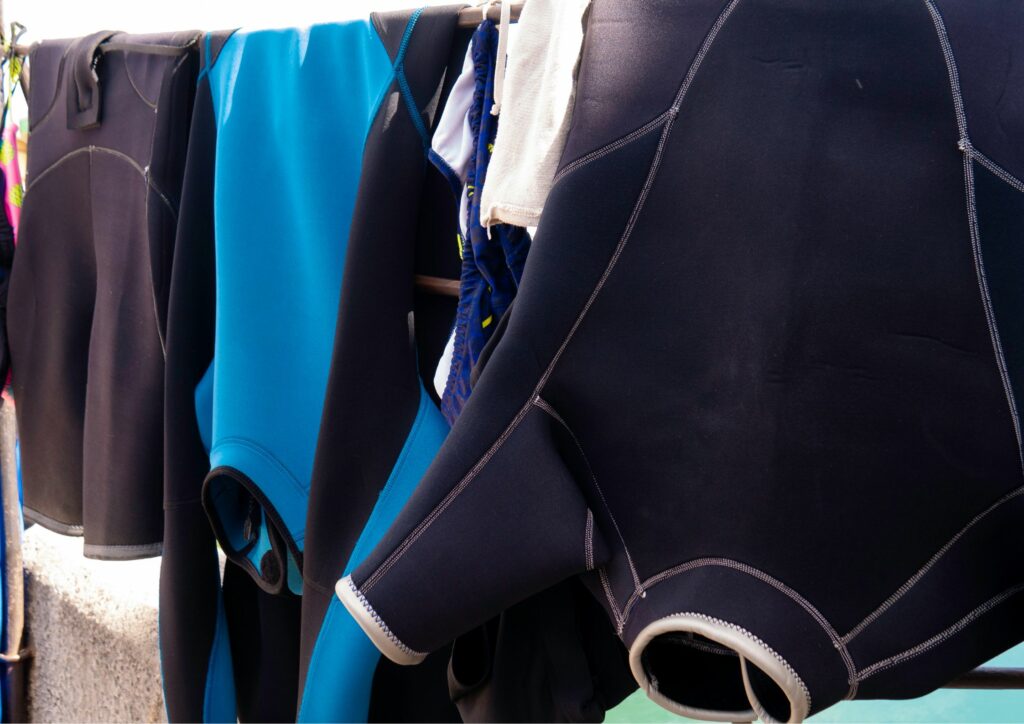This blog post directly pits the dry suit against the wet suit in an epic Scuba Showdown. Let’s explore together which suits suit you right, considering essential factors like sea water temperature, the location of the dive and its seasonality. Whether you’re a professional deep sea diver or a recreational diver venturing into colder waters, understanding these sea warriors is vital! Welcome to our deep dive into the adventurous world of underwater exploration. Today, we unlock a perpetual debate about the ultimate gear for deep sea diving.
Understanding the Heroes: Dry Suit and Wet Suit
The dry suit and wet suit could be likened to two intriguing superheroes, each unique yet striving towards a common purpose – enhancing your underwater experiences. The key responsibility they share is battling against hypothermia, the stealthy villain always lurking around when you dive into colder waters. They also play an important role in improving your buoyancy. When diving, the wet suit becomes your second skin, allowing a tiny amount of water to seep in. Your body does the admirable task of heating this water, creating an insulating layer between your skin and the chilly ocean. Constructed from neoprene, this suit is perfect for water temperatures ranging from 50 to 80 degrees Fahrenheit. Now, on to the dry suit – the hero designed for maximum insulation. With this suit, no water comes in contact with the body thanks to the seals at the neck and wrists. With its strong protective shield, this suit becomes the diver’s trusted companion in water temperatures less than 50 degrees Fahrenheit, and for extended durations of winter diving.
The Battle of Warmth

The war against the freezing temperatures of the deep sea manifests differently in both suits. While the wet suit incorporates the ingenuity of the human body, allowing the sea water to infiltrate into the suit and utilizing body warmth to create an insulating layer, it may falter in colder waters. The dry suit, however, undeterred by the extreme cold, focuses on keeping you dry. It leverages the concept of different layers of clothing, allowing you to adjust its insulating properties depending on external conditions. This strategic design enables the dry suit to come out on top in freezing conditions, making it the victor of the winter diving round.
Buoyancy and Mobility Warfare

Perfecting buoyancy and mobility in diving gear is a delicate art, often leading to a trade-off. Dry suits, while excellent in insulation, can occasionally cause complications with buoyancy due to the encased air. This may affect your vertical movement during a deep dive. However, the wet suit takes the lead in offering better overall mobility and superior control of buoyancy. Its skin-tight design ensures a closer fit to your body, aiding comfort and fluidity of movement underwater. In this category, the wet suit is likely to be the celebrated victor.
The Durability Duel

The longevity and durability contest often brings interesting results. Dry suits are typically cast from hardier materials and designed for rough use, making them perfect candidates for extreme conditions like ice diving. On the flip side, wet suits, although less durable, prove to be more cost-effective – they’re cheaper to buy and easier to repair if damaged. In the durability duel, your choice will rest on balancing the need for robustness and adverse condition resistance with price consideration and ease of maintenance.

The Wet & Dry Scuba Suit Standoff: Final Verdict for Your Bali Diving Trip
Choosing between a wet suit and a dry suit is a crucial decision for any Bali diving trip, as it significantly impacts your comfort and diving experience. Bali’s tropical climate and warm waters typically favor wet suits, which provide flexibility and sufficient thermal protection while allowing for a closer connection with the aquatic environment. Wet suits, usually made from neoprene, are ideal for the majority of Bali’s dive sites, where water temperatures range from 26-30°C (79-86°F).
However, for those planning to explore deeper or colder sites, or who may be sensitive to cooler temperatures, a dry suit offers superior insulation and comfort. Dry suits are designed to keep you completely dry, providing an additional layer of warmth and protection, especially during extended dives. Ultimately, the choice depends on personal preference and the specific dive conditions you anticipate. Whether you opt for a wet or dry suit, ensuring the right fit and quality gear will enhance your Bali diving adventure, allowing you to fully enjoy the stunning underwater landscapes this paradise has to offer.
I’m a huge fan of wet suits myself, but I can see the value in using a dry suit for certain situations. The durability and insulation are really important considerations. Thanks for the great write-up!
Hi Evelyn! Thanks for sharing your thoughts on both wet and dry suits. You’re absolutely right that durability and insulation are crucial factors to consider, especially when diving in extreme conditions. It’s great that you appreciate the value of a good wet suit, but also recognize the importance of having a reliable dry suit option as well. At Gill Divers, we believe that having the right gear for the job is essential for an enjoyable and safe dive experience. If you have any questions or concerns about choosing between wet and dry suits, feel free to reach out to us anytime at Tel: +65 6734 9373 or Email: [email protected]
I totally agree with this blog post! As a recreational diver, I’ve had my share of struggles with wet suits and dry suits. This breakdown of the pros and cons is really helpful for making an informed decision.
Hi Angeline, thank you for sharing your experience with both wet and dry suits! We’re glad to hear that our blog post has been helpful in making an informed decision. At Gill Divers, we understand the importance of having the right gear for a comfortable and enjoyable diving experience. If you have any further questions or concerns, please don’t hesitate to contact us at +65 6734 9373 or [email protected]. We’re always here to help. Looking forward to hearing about your next dive adventure!
I’ve never thought about using a dry suit in Bali, but it makes sense. The water temperatures can drop significantly at night or during deeper dives. This post has definitely given me food for thought.
Hi Kavin, thank you for sharing your thoughts! You’re right, water temperatures in Bali can fluctuate depending on the time of day and depth of the dive. While dry suits might not be necessary for most surface-level dives, they can provide an added layer of warmth and comfort during deeper or colder excursions. If you do decide to try a dry suit, make sure to get a proper fitting and follow manufacturer instructions for inflation and usage. We’re always happy to help with any diving-related questions! Contact us at Tel: +65 6734 9373 or Email: [email protected] for more information.